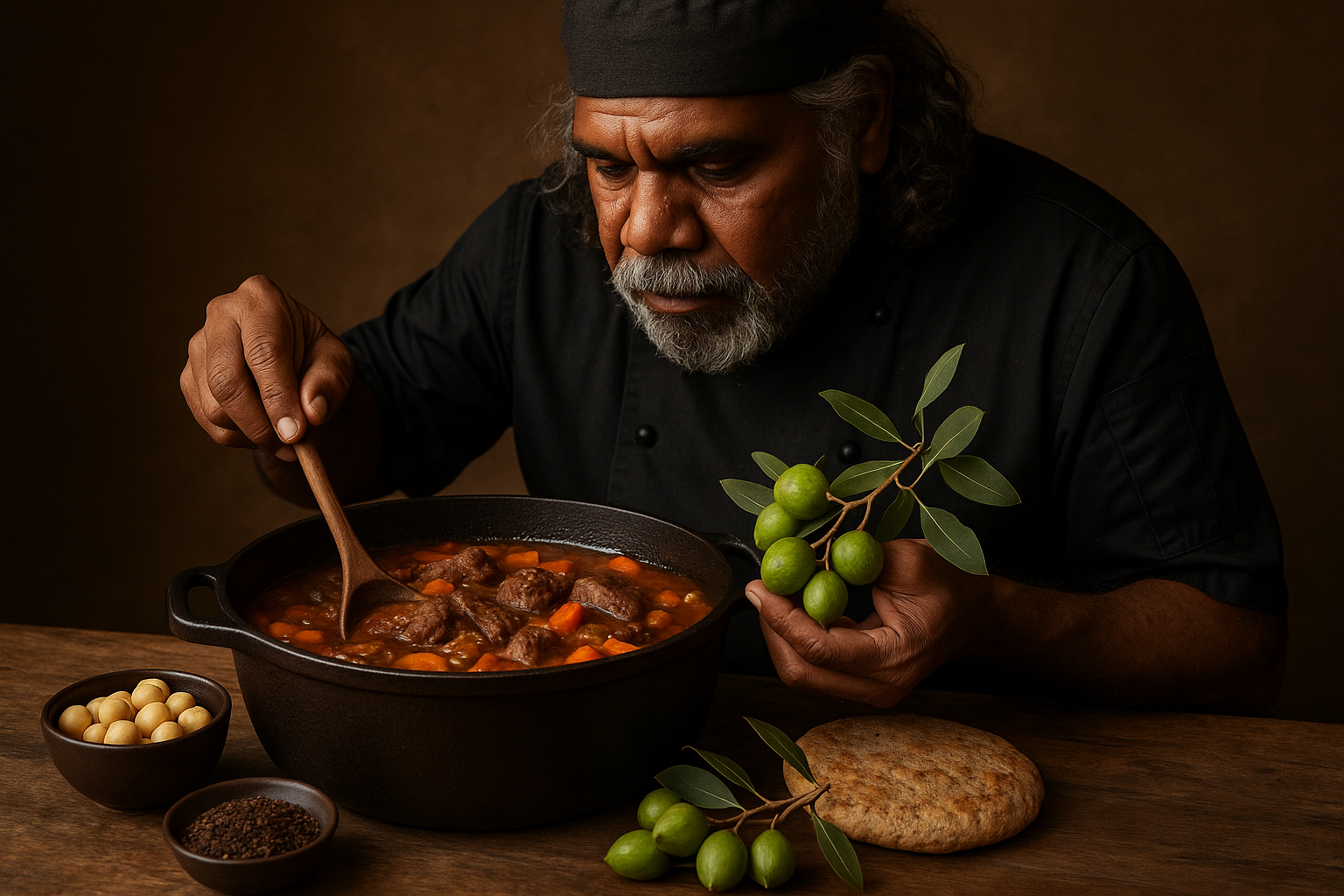Discovering the Allure of Indigenous Australian Cuisine
Australia has a rich culinary heritage that dates back thousands of years. Indigenous Australian cuisines offer an exciting array of unique flavours and techniques. This article delves into the world of Indigenous Australian food, highlighting its significance and potential for innovation in contemporary gastronomy.

A Tantalizing Journey to the Heart of Aboriginal Cuisine
The Aboriginal people of Australia have a rich culinary history that spans over 60,000 years. Their diet, known as bush tucker, is centered around food sourced from the land and sea. It includes a variety of fruits, vegetables, nuts, seeds, and meats. Traditional methods of food preparation, such as baking in hot coals or steaming in paperbark, add distinctive flavors and textures to these foods.
Celebrating the Bush Tucker Ingredients
Bush tucker ingredients are not only delicious but also highly nutritious. The Kakadu plum, for example, is packed with Vitamin C. The macadamia nut, native to Australia, is a powerhouse of healthy fats. Wattleseed, a staple in Aboriginal diets, is rich in protein and fiber. These ingredients offer an exciting opportunity for chefs to design innovative and healthful dishes.
Indigenous Australian Cuisine in Modern Gastronomy
More and more, chefs around the world are incorporating Indigenous Australian ingredients into their menus. They’re creating fusion dishes that combine traditional Aboriginal ingredients with modern cooking techniques. This trend is helping to preserve and promote Indigenous Australian culinary heritage while offering diners new and exciting gastronomic experiences.
Reimagining Traditional Aboriginal Dishes
In today’s culinary world, Aboriginal dishes are being reimagined in creative ways. Traditional dishes like kangaroo stew, damper bread, and witchetty grubs are being transformed into modern culinary delights. This fusion of tradition and innovation is opening new frontiers in gastronomy.
The Role of Indigenous Australian Cuisine in Sustainable Food Practices
Indigenous Australian cuisines are rooted in sustainable food practices. The Aboriginal people have always lived in harmony with nature, sourcing food sustainably and wasting nothing. This approach aligns with the current global trend towards sustainable and ethical eating, making Indigenous Australian cuisine highly relevant today.
Interesting Facts and Tips:
-
The term ‘bush tucker’ refers to the array of native foods and ingredients used in Aboriginal cuisine.
-
The Kakadu plum, native to Australia, has the highest Vitamin C content of any fruit in the world.
-
Aboriginal people traditionally used every part of an animal, following sustainable hunting practices.
-
Wattleseed, a key ingredient in Aboriginal cuisine, can be ground into flour and used in baking.
In conclusion, Indigenous Australian cuisine offers a unique culinary experience, marked by native ingredients, ancient techniques, and sustainable practices. As this cuisine finds its place in modern gastronomy, it’s clear that the culinary world has much to learn from the Aboriginal people’s symbiotic relationship with their environment. So, the next time you’re exploring new flavors, why not delve into the world of Indigenous Australian food and expand your culinary horizons?




